Completing Deep Dives into the Trilogy of Longstanding Gaps in Wildfire Prevention, Mitigation, and Response
In the two previous deep dives of this series (From Detection to Action: Closing the 95 Year Gap in Aerial Wildfire Response, and Defusing America’s Wildfire Time Bomb: Modernizing Our Approach to Confronting the Hazardous Fuels Backlog), we brought to light longstanding, significant, and yet often overlooked gaps in wildland fire prevention, mitigation, and response.1 2
Each highlighted persistent voids that limit our ability to protect our firefighters and the communities they serve, and illustrated how drones have demonstrated their ability to fill these voids. We complete this trilogy with another chapter of the same story: persistent capability voids that, decade after decade, continue to fuel predictive catastrophic wildfire losses. As with the previous installments, this is not about finding fault; it is about bringing everyone together—agencies, industry, researchers, local communities, and funders—to close capability gaps that leave many Americans vulnerable to the direct and indirect effects of wildfires.
Improving prevention, mitigation, and response is crucial, but so is prioritizing the specific voids where we currently lack effective tools and tactics. The clear executive direction to empower commonsense wildfire prevention and response is a rallying cry. By pairing validated technology with tested doctrine, preauthorized operational pathways, and community resilience measures, we can turn policy intent into real reductions in wildfire loss and suffering.3
An Extreme, Costly, and Deadly Wildfire Variant
Wind-driven wildfires are no longer an occasional, localized phenomenon; they are the dominant cause of the most catastrophic, fast-moving conflagrations that destroy lives, infrastructure, and regional economies.4 In the western United States and several other regions, a specific class of wind-driven events—downslope and extreme-wind–driven fires—now account for an outsized share of burned area (over 500 million acres), structure losses (~22,000), costs (~$100 billion), and fatalities (230), as shown in the table below. Wind-driven wildfires not only increase the speed and intensity of fire spread, but they also add significant difficulty in safely and effectively delivering suppression in initial attack.5
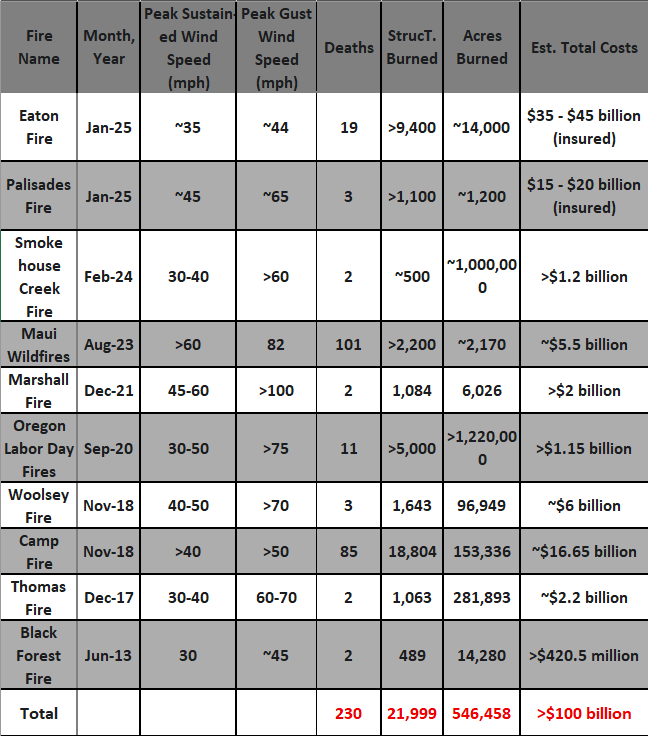
Structural and wildland-fire research confirms a hard truth: Once wind establishes a sustained flow path, suppression options rapidly collapse, and interior ground operations become untenable.6 7 Current doctrine, tools, and posture leave communities exposed when extreme winds and dry fuels combine. 8 9
Why Wind‑Driven Fires are Uniquely Deadly, Costly, and Difficult to Contain
Wind is not merely an accelerant; it is a structural modifier of the fire problem.10 Under high‑wind regimes, the dynamics of flame propagation, ember transport, and heat transfer change in ways that render many conventional tactics ineffective.11 From a practical standpoint, wind‑driven wildfire regimes have three interlinked characteristics that make them the most dangerous type of wildfire for communities.12 13
1. Escalating rate of spread and mass momentum. Sustained downslope or strong synoptic winds convert a localized surface ignition point into a broad, coherent advancing front.14 Measured forward rates of spread can increase dramatically—sometimes by orders of magnitude—compared with fuel‑limited or low‑wind scenarios.15 At the neighborhood scale, that speed compresses the decision windows for evacuation, rendering numerous ground and aerial suppression options unavailable.16 17 The escalating rate of spread poses particular challenges to containing the fire in the initial attack phase. While every wildfire begins as a small fire, the decisive variable is the time between ignition and effective intervention. High winds compress that window from hours to minutes. If no capable suppression option can be applied in the first critical minutes at the ignition point, the fire rapidly acquires self‑sustaining momentum and spreads beyond the reach of initial attack.
2. Flow‑path concentration, localized thermal intensification. Terrain or built structures interacting with wind produce flow corridors and hydraulic‑like channels where convective energy concentrates. Within these flow paths, temperatures and flame intensities escalate, creating localized atmospheres that are lethal for firefighters and hostile to aviation operations. Flow‑path physics means that once a channel forms, conventional perimeter containment is often an unrealistic objective until the wind subsides.18
3. Ember storms, distant spotting, and structural infiltration. Winds loft burning firebrands—embers—that can travel miles and ignite receptive fuels far ahead of the main front. An ember storm turns a single ignition into many simultaneous, spatially distributed ignitions across built and vegetated landscapes, multiplying the incident footprint faster than resources can concentrate.19 20 Ember showers seed spot ignitions across rooftops, in dry understory, and in vegetated corridors—many of which lie beyond preexisting lines of defense.
The ember field effectively multiplies the incident footprint by orders of magnitude, turning what might have been a contained event into multiple concurrent fires that overwhelm the suppression capacity that was designed to handle individual structural fires, rather than neighborhoods ablaze as the result of ember storms. Once fire breaches the exterior shell of a building, wind-driven fire dynamics often produce intense interior conditions where escape and interior suppression are impossible. Structural vulnerability to embers—unprotected vents, combustible roofing, and adjacent fuels—is a major driver of catastrophic community loss in wind-driven events.
These mechanisms are multiplicative rather than additive. An early, small ignition under strong winds can generate a massive ember cast that seeds numerous structural ignitions miles beyond the flame front, which in turn creates new flow dynamics and adds to the convective energy of the main fire, accelerating spread and complicating suppression.
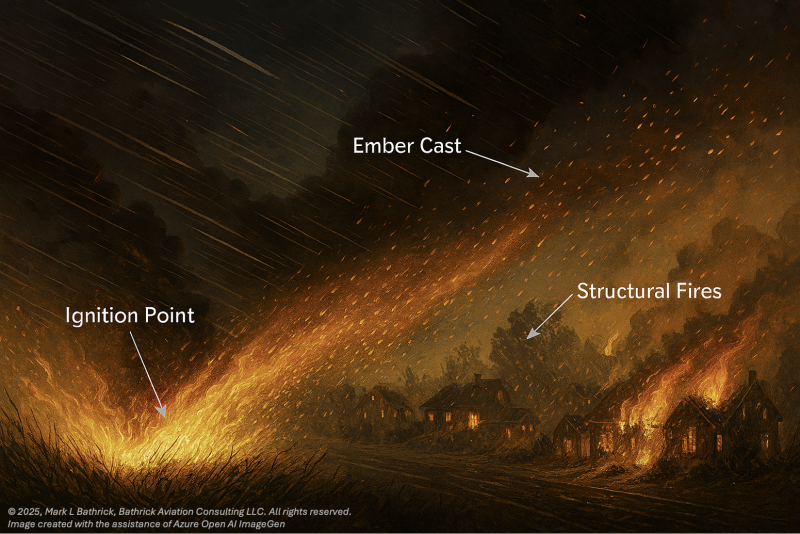
The Broader Picture: Mitigation Matters as Much as Suppression
Reducing the human and economic toll of wind-driven wildfires goes beyond faster detection or more aggressive suppression; it is equally about proven mitigations that keep flames from finding homes in the first place.21 Natural buffers, targeted fuel reduction treatments, Zone Zero22 clearances, and home hardening measures are mature, practical, and highly effective lines of defense.23 24 These are not speculative remedies; they are established practices with proven technology ready for broad implementation.25 Community-level gains from well-placed fuel treatments, defensible space programs, and building scale hardening are real and measurable. These measures shrink the receptive area for embers, reduce ignition pathways into structures, and materially improve survivability during extreme winds. Despite these advantages, behavior mechanisms like optimism bias, temporal discounting, unclear perceived efficacy, short‑term costs, complacency, weak social norms, and trust gaps often combine to form significant barriers to change.26 27 28 Given the significance of these mitigation measures and the inherent challenges in persuading individuals and communities to adopt them, numerous programs are currently dedicated to addressing this issue. 29 30 31 32 33
Focusing on the Gaps in Wind-Driven Ignition Point Suppression and Ember Cast
Where mitigation creates the conditions for success, it is our capability to act swiftly and precisely that is key to preventing a single wind-driven ember or nascent ignition from escalating into an ember storm and a multi-site conflagration. That requirement leads naturally to the focus of this article: the interrelated operational gaps in aerial suppression under high winds, in ember cast detection and real-time mapping, and in modeling that can resolve the fire–atmosphere coupling and transport pathways that produce rapid spotting and flow path acceleration. Closing those gaps—by fielding delivery systems and terminal guidance that work in gusty envelopes, by deploying sensing and analytics that map ember vectors in near real time, and by using coupled models that produce minute-scale actionable forecasts—turns mitigation into durable protection rather than merely delaying loss until the next extreme wind event.
Why Current Aerial and Ground Capabilities Fall Short in High Winds
Air and ground assets remain central to wildfire response, but their effectiveness is bounded by physics and human safety considerations.
- Manned aerial resources. Fixed‑wing airtankers and manned helicopters are powerful initial‑attack tools in many contexts, but they must operate within aerodynamic safety envelopes. High sustained winds, strong turbulence, and extreme rotor effects in complex terrain reduce drop accuracy and can make low‑altitude operations unsafe. Beyond safety, wind degrades the terminal effectiveness of drops: retardant and water are dispersed, drifted, and diluted, losing the concentration needed to quench emerging fire heads or prevent ember ignition. In many wind‑driven events, the conclusion is unavoidable: the safest option for aircrews is to stand down.34 35 36 37
- Small UAS (sUAS). sUAS offer fast, low‑cost remote sensing and can inform decisions with thermal and visual data, near‑source wind measurements, and precision mapping. Yet the payload, endurance, and stability limitations of current sUAS when compared to their manned aircraft counterparts make them poor substitutes for true suppression in high winds.38
- Ground crews. Ground forces are the ultimate knife-edge of suppression, but in flow paths and ember storms they face lethal conditions.39 40Rapid directional shifts, flame front accelerations, and spreading spot fires force tactical withdrawal or defensive posture, leaving the fire unchecked while winds are high.41 This is both a safety and operational failure: communities burn while responders stand down to preserve lives.42
The result is a consistent pattern: when conditions are worst and intervention is most needed, the most conventionally effective wildfire response assets are often unavailable or ineffective. Like the previously identified response and mitigation performance gaps that were highlighted in the two previous Commercial UAV News articles in this series, our lack of capability to quickly respond to wind-driven ignitions is an operational shortcoming the nation must close.
A Solution Set: Precision Delivery Systems, Enhanced Sensing, AI-Enabled Prepositioning, and Predictive Response
Addressing wind‑driven wildfire requires an integrated operating concept with three interdependent pillars: (A) high‑wind capable platforms and suppressant delivery systems, (B) precision sensor payloads optimized for ember cast detection, modeling, and spot‑fire prediction, and (C) AI‑supported prediction and prepositioning that collapses detection‑to‑effect time. Let’s examine each in turn.
Pillar A — High‑Wind Capable Aircraft and Delivery Systems: Designing platforms and delivery systems that can operate effectively in gusty, turbulent winds requires rethinking both airframe and employment doctrine. An effective initial-attack aircraft-and-retardant system for wind-driven ignitions must reconcile contradictory demands; be fast and nimble enough to reach and work low in turbulent, smoke-filled air while carrying enough useful suppressant to alter fire behavior and do so repeatedly from forward bases. The physics of wind-driven fire (strong, gusting winds, spot-fire production, and vertical convection) reduces the margin for error. Drops must be placed precisely and rapidly before fire growth outpaces response.
Candidate approaches include:
- Hardened, large, purpose-built UAS systems engineered with active control surfaces, vectored thrust, and redundant flight control to maintain precise terminal vectoring in crosswinds.
- Optionally piloted aircraft capable of human oversight in lower‑risk windows and remote/automated operation in high‑risk windows to remove crews from harm’s way.
- Robust, high-wind autonomous, artificial intelligence-guided drone swarms able to deliver a high-tempo, fractionated initial attack.43 This approach prioritizes precision and continuous re-engagement over mass payload volume to maximize suppression effectiveness against nascent wind-driven wildfire ignitions.
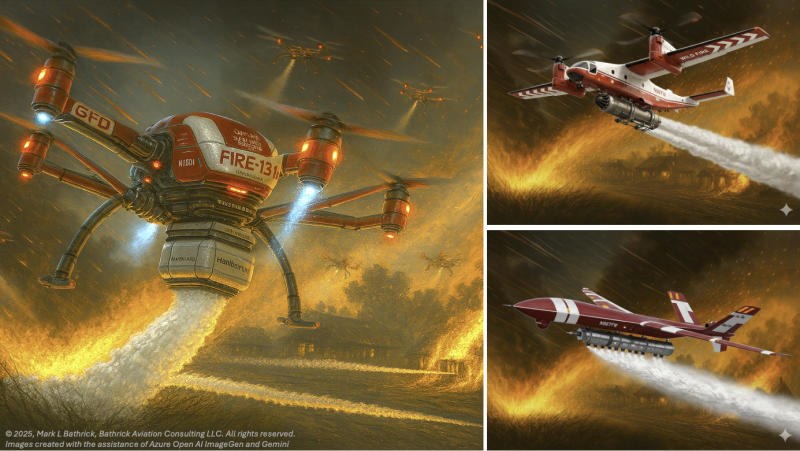
Technical rigor and innovation are required: aerodynamic design, precision all-weather guidance and targeting systems, and terminal stabilization must be validated across representative wind envelopes and flow‑path turbulence. Where a platform and delivery system cannot reliably place suppression on target under the required wind range, it does not meet the operational requirement. Given the physics of extreme atmospheric conditions associated with wind-driven wildfires, delivered suppressants must also be tailored for this punishing, but critical use case. Water-enhancers44 45 46 and plant-based fire suppressant/retardant combinations47 48 currently on government-approved wildland fire chemical lists offer a head start here. Could we use ground robotic vehicles to initiate attacks on wildfires driven by the wind?49 While autonomous or remotely controlled robotic vehicles have many potential wildland fire applications, they suffer from the same time and distance drawbacks as other traditional initial attack ground resources in being able to quickly respond to the tens of thousands of wildfire starts50 that occur across the U.S, often without warning. Delays in response to wind-driven wildfires by initial attack resources contribute to their costly and deadly nature.
Pillar B — Non-Traditional Delivery Mechanisms, Enhanced Payloads and Precision Guidance: The operational goal in wind-driven wildfire initial attack is not to blanket large areas with dilute retardant but to surgically neutralize the ignition point fire as quickly as possible to reduce the ember vectors and resulting nascent spot fires that often occur miles from the flame front.51 As a result, “bombing” wildfires has resurfaced from the fringes to a credible avenue for precision suppression of otherwise untouchable wind-driven fire ignition origins, evolving from improvised military-inspired concepts to purpose-built aerial delivery of extinguishing agents and suppression delivery devices. Historical attempts include Sweden’s 2018 use of high-explosive ordnance to deprive fires of oxygen,52 U.S. proposals to adapt military precision container aerial delivery systems (PCADS) for wildland contexts,53 and public debate around using actual bombs for California fires.54 Parallel to this, drones have matured from reconnaissance into active fire tools. Using technology first developed in the U.S. in 2016, wildland firefighters now drop ping-pong-sized “dragon eggs” to ignite backfires, improving both firefighter safety and fire containment performance.55 56
Additionally, field-testing is underway with UAV-delivered water-based and dry-powder extinguisher bombs, suggesting a path from experimental novelty to operational precision.57 Industry and research communities continue to push toward non-traditional aerial delivery mechanisms, enhanced payloads, and guided units for targeted suppression at the ignition source, especially where access is limited and timing can be decisive.58
Challenges in Gaining Acceptance for Precision Guided Suppression Devices
Addressing concerns faced by previous attempts to introduce non-traditional suppression delivery mechanisms will be a requirement. These concerns include: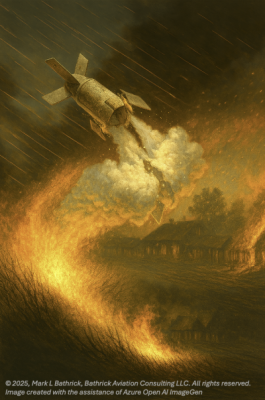
- Safety and ethics: Proposing methods that come across as modeled after military ordnance raised concerns about collateral damage, firefighter and public safety.
- Evidence and repeatability: Early concepts lacked standardized tests, quantified coverage, and effectiveness data across fuels and wind regimes.
- Regulatory hurdles: Airspace restrictions, certification pathways, and policy friction slowed adoption.
- Operational integration: Coordinating with conventional air ops, minimizing drone incursions, and ensuring interoperability with ground tactics proved difficult in dynamic firegrounds.
- Public perception and communications: “Bombing” rhetoric triggered skepticism and media backlash, complicating nuanced discussions about precision, non-kinetic payloads, and targeted suppression.
- Logistics and capability limits: Payload capacity, battery endurance, precision delivery in wind and smoke, and night/smoke navigation demanded specialized platforms, guidance, and doctrine to be effective at scale.
- Environmental and hazardous materials concerns: While the use of biodegradable materials (e.g., cardboard, plant based biodegradable materials, etc.) have been suggested as ways to minimize these concerns, the reality is that guidance, maneuver, and dispersion requirements will introduce components that would require clean up following the wildfire, increasing time, costs, and with the potential to leave safety and health hazards behind.
- Niche use case ROI considerations: While precision-guided suppression devices might be able to address the current wind-driven wildfire initial attack challenge, it’s likely that it will not be the tool of first choice when traditional aerial suppression resources can be employed.
Why Wind-Driven Ignitions May Change the Calculus
In severe, wind-driven wildfires—where traditional suppression is often unsafe, ineffective, and overwhelmed—the potential return from rapidly degrading the ignition’s intensity and dramatically reducing ember cast is compelling. Precision-guided aerial suppression units with non-traditional delivery, heavier dry-powder or gel payloads, and timed/altitude-triggered dispersion can target the ignition fire and adjacent heat sources to blunt geometric spot-fire proliferation miles downwind, potentially buying time, reducing starts, and lowering structural exposure during the most lethal phases. The risks that stalled earlier initiatives may be outweighed by the disproportionate gains from slowing ignition growth and suppressing ember production in these extreme conditions.
Pillar C — Predictive AI and Prepositioning: The single biggest constraint in wind‑driven events is time. The longer the wind-whipped fire burns, the faster it spreads and the more dangerous the ember storm-induced spot fires become. Predictive systems change the game: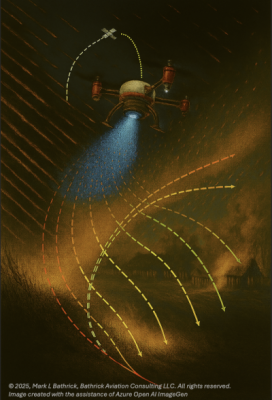
- Data ingest and compute at speed and scale: AI models ingest mesoscale and microscale forecasts, localized wind profiler data, satellite thermal imagery, fuel moisture and phenology maps, infrastructure exposure layers, and historical analogs to produce minute‑to‑hour risk horizons in advance of forecast high wind events.
- Data to information, to knowledge, to prescriptive action: These probability fields identify likely flow‑path formation, ember‑cast corridors, and nodes where prepositioned precision assets would have the highest marginal value. This also supports timely and precisely targeted public warnings (like tornado warnings).
- Prepositioning response resources: assets are staged in forward nodes prior to forecasted high‑wind windows so that when an ignition occurs, time‑to‑first‑effect is measured in minutes. Prepositioning also optimizes launch radius and refueling/reload logistics.
- Real-time ember tracking: distributed networked ground sensors, integrated aerial observations, and models can estimate ember travel vectors in near real time, cueing rapid reallocation of precision assets to newly ignited spots and guiding public warning and evacuation routing.
Integrated systems provide automated advisories—human‑in‑the‑loop or human‑on‑the‑loop—to enable preauthorized resource activation, advisories, and warnings utilizing previously agreed thresholds, strongly reducing bureaucratic friction and delays in the moment of crisis.
A Possible Future State: Precision suppression assets are prepositioned at forward nodes based on AI-supported predictive analysis. An ignition is detected by satellite or local sensor; within minutes, a prepositioned precision suppression resource launches, compensates for crosswind drift using terminal guidance, and deposits concentrated gel on the nascent head and in the emerging ember field. Ground crews, which previously faced an unmanageable front, now approach a stemmed and localized incident with suppressed ember spread, reducing the risk of entrapment and enabling coordinated containment.
Everything is Impossible…..Until it’s Not
No doubt, some readers will dismiss the envisioned future where we close our historic gaps in addressing wind-driven wildfires as “impossible.” Fortunately, whenever I reach for my pocket-sized computer, camera, GPS, TV, radio, AI assistant, video conference room, check my wrist-wearable health and fitness monitor, use any of the advanced automation in my car or watch another rocket gently return to earth and land on a pair of “chopsticks,” I’m reminded that “impossible” is just something that is waiting for the right conditions in circumstances to become “possible.”
The Time is NOW for Bold, Outcome-Driven Action to Close the Gaps in Wildfire Prevention, Mitigation, and Response
As we conclude this trilogy of in-depth explorations of our longstanding gaps in wildfire prevention, mitigation, and response, this article and the previous two highlight the unique convergence of recent federal directives. These directives position us in the best position in decades to successfully undertake bold, outcome-driven action to fill these historic performance voids.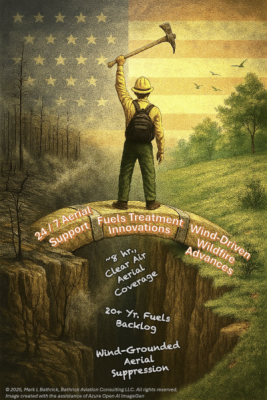
The convergence of recent federal directives represents more than incremental reform—it is a historic inflection point. The White House’s Empowering Commonsense Wildfire Prevention and Response executive order, the USDA and DOI’s modernization plans, and the OMB/OSTP R&D priorities memo collectively demand a technology-first transformation of wildfire management (White House, 2025; DOI, 2025; OSTP, 2025). These directives explicitly call for technologies that support modernized aerial firefighting fleets, precision-guided suppression devices, and AI-enabled predictive services—the very capabilities we have identified as missing from today’s wildfire response. As Commercial UAV News has underscored, drones are still underutilized in suppression, often relegated to reconnaissance rather than being empowered to deliver time-critical suppressant payloads where manned aircraft cannot safely operate (Commercial UAV News, 2025). By mandating a national technology roadmap and unified procurement strategies, these federal actions directly target that gap, ensuring drones and AI are not afterthoughts but frontline assets in the fight against wind-driven firestorms.
Equally critical, these directives align with the urgent call to confront America’s hazardous fuels backlog, which Commercial UAV News has described as a ticking time bomb (Commercial UAV News, 2025). For decades, the buildup of fuels has amplified the destructive power of ember-driven wildfires, overwhelming suppression resources and devastating communities. The USDA’s Secretarial Memorandum 1078-017 and DOI’s Secretary’s Order 3443 explicitly elevate fuels management as a national priority, linking it to predictive modeling, precision aerial treatments, and AI-driven risk assessment (USDA, 2025; DOI, 2025). This is not just about cutting brush—it is about deploying advanced suppression and fuels-reduction technologies in tandem, creating a system where UAVs, precision payloads, and AI advisories work together to slow ignition growth, reduce ember cast, and blunt the exponential spread of fire.
Together, these directives and companion insights form a rallying cry for bold, outcome-driven action: to move beyond reactive suppression and embrace a proactive, technology-enabled wildfire strategy. The message is clear—we now have both the mandate and the means to modernize aerial firefighting, empower drones with precision suppression roles, and tackle the fuels backlog that has long fueled catastrophe. The time for incrementalism has passed. What lies before us is the chance to redefine wildfire response for a new era—faster, safer, smarter, and finally equal to the scale of the threat.
The tools are here. The mandate is clear. The time is now.


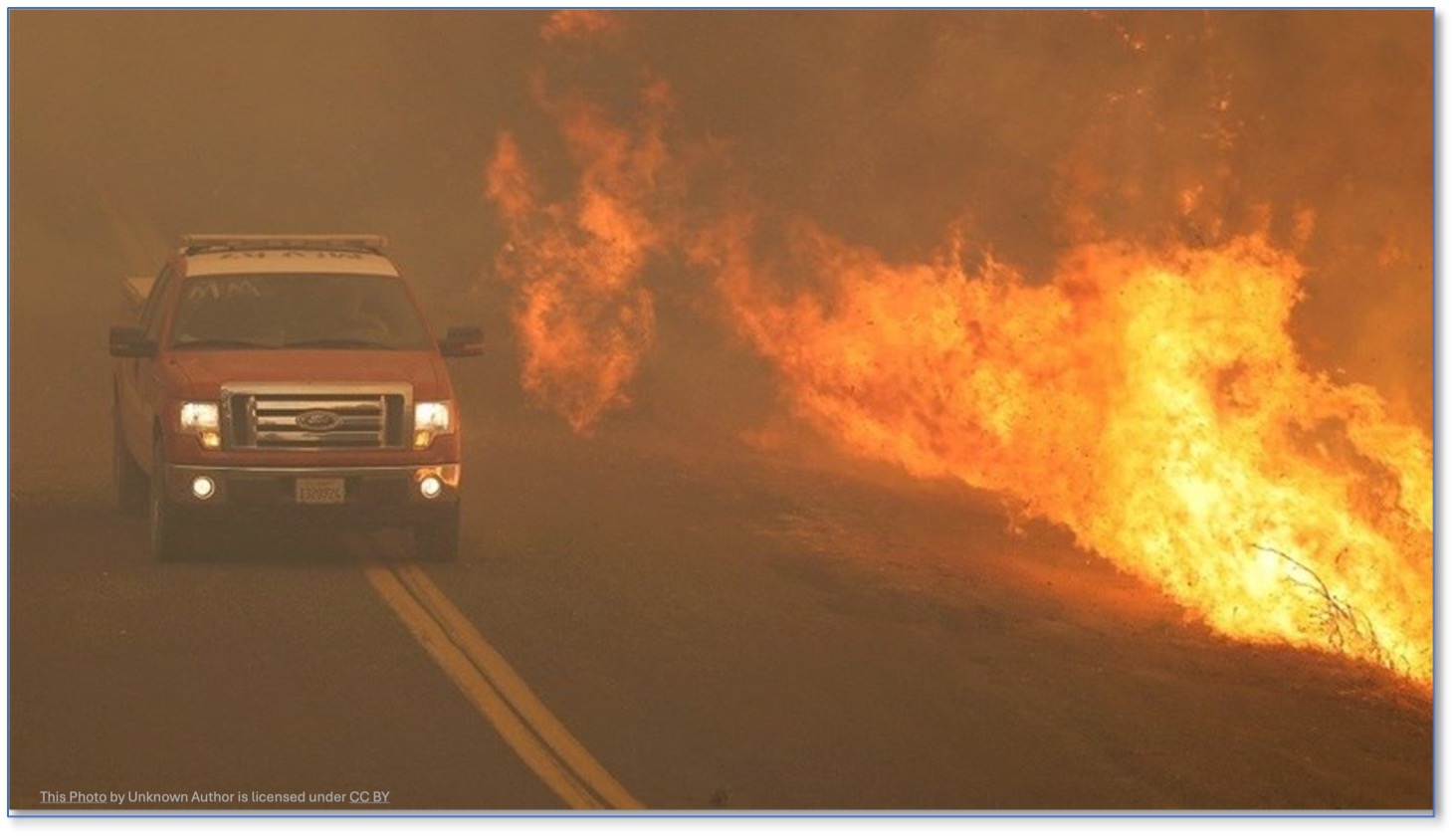

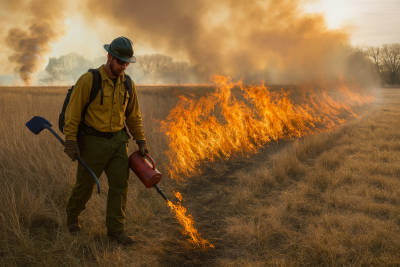
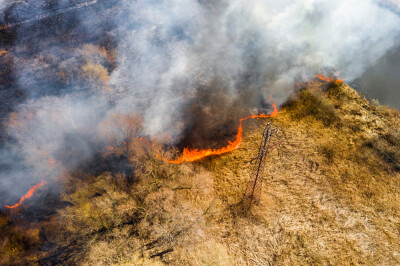

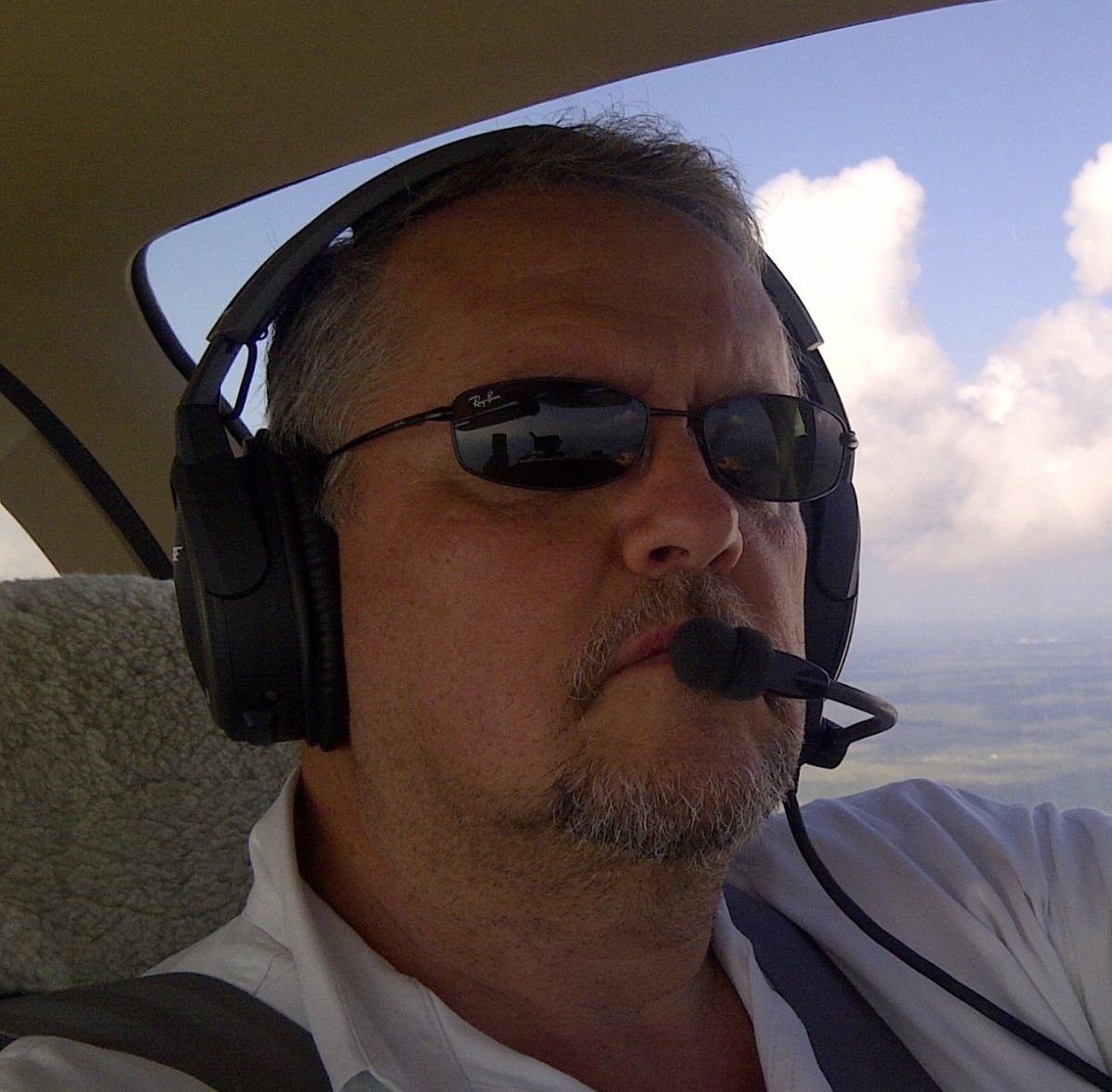




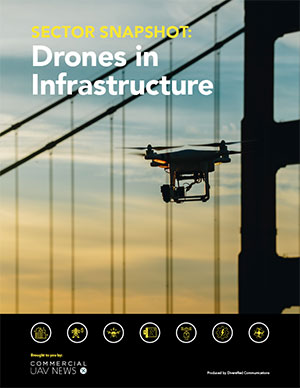
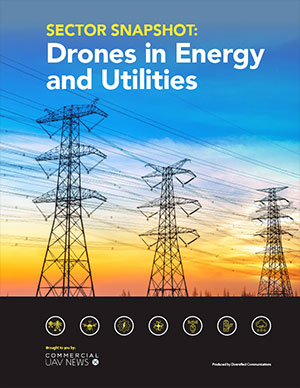
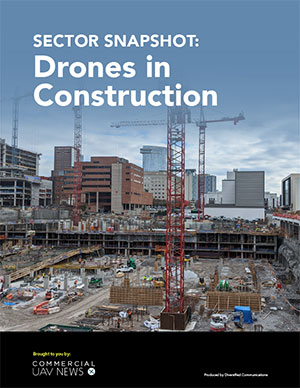
Comments